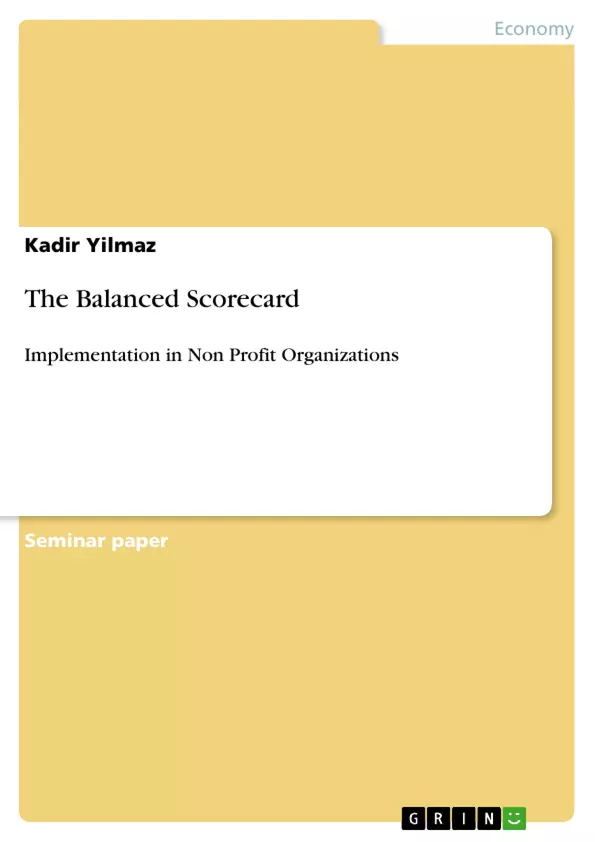In the beginning of the 1980`s a new Management Theory was introduced. Rappaport made one of the first Concepts about business performance (Rappaport, A. creating shareholder value: the new standard for business measuring, New York 1986) in 1986. This was taken as a basis of creating shareholder value for several years. In the early 1990`s a unique term was created by Norton and Kaplan from the Harvard Business School. They developed a Framework which combined fiscal and non-fiscal key figures in one report to allow straight translation of defined strategy into deserved action, The Balanced Score Card (BSC). Even non-profit organizations must handle in a sensible way with funds they receive.
Inhaltsverzeichnis (Table of Contents)
- Abstract
- Introduction
- Theoretic Foundation
- What Is Strategy?
- Strategic Management from Top to Bottom
- Strategic Maps
- Balanced Score Card (BSC)
- Concept of the BSC
- Fundamentals of BSC
- Implementation of the BSC
- Implementation of the BSC within a charity organization
- Implementation of the BSC within a hospital
- Financial
- Customer
- Internal Business Processes
- Learning and Growth
- Conclusions
- Bibliography
Zielsetzung und Themenschwerpunkte (Objectives and Key Themes)
The objective of this work is to explore the application of the Balanced Score Card (BSC) in non-profit organizations, particularly in the context of the German healthcare sector. The paper outlines the theoretical foundations of strategic management and the BSC, emphasizing its importance for organizations operating in a dynamic environment. It also examines the practical implementation of the BSC within both charity organizations and hospitals, highlighting the specific challenges and opportunities of this approach. The key themes of the paper are:- The evolving nature of strategy in a dynamic business environment
- The importance of aligning organizational processes and key figures to achieve strategic objectives
- The application of the Balanced Score Card as a tool for strategic management in non-profit organizations
- The role of the BSC in improving the quality of care and achieving customer satisfaction in healthcare institutions
- The potential for the BSC to contribute to quality management certification in healthcare settings
Zusammenfassung der Kapitel (Chapter Summaries)
The paper begins by providing a brief overview of the development of strategic management and the Balanced Score Card (BSC). It highlights the importance of shareholder value as a guiding principle in business performance, and the emergence of the BSC as a framework for combining financial and non-financial key figures in a single report. The paper then introduces the concept of the BSC and its fundamental principles, emphasizing its value as an operational tool for value-oriented corporate management. The text further explores the implementation of the BSC in non-profit organizations, specifically focusing on its application within a charity organization and a hospital. The paper concludes by examining the potential benefits of the BSC for healthcare institutions, including its use in quality management certification and its ability to enhance customer satisfaction.Schlüsselwörter (Keywords)
The paper centers around the key concepts of strategic management, Balanced Score Card (BSC), non-profit organizations, healthcare, and quality management. The work explores the theoretical foundation of the BSC, its practical implementation within healthcare institutions, and its potential to improve both financial and non-financial performance in non-profit settings.- Quote paper
- Dr. Kadir Yilmaz (Author), 2009, The Balanced Scorecard, Munich, GRIN Verlag, https://www.grin.com/document/135954



